Mexican strain developed by the U.S. Marine Shrimp Farming Program
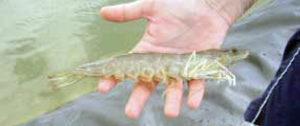
A major obstacle in assessing disease resistance or evaluating the efficacy of health-enhancing products in shrimp is the lack of a suitable reference strain to control for potential confounding genetic effects.
In an effort to supply U.S. scientists with “white mice” for shrimp disease research, researchers at the Oceanic Institute’s Kona, Hawaii, facility produce specific pathogen-free (SPF) Pacific white shrimp (Litopenaeus vannamei), which are highly susceptible to Taura Syndrome Virus (TSV). This reference strain originated from Sinaloa, Mexico, and was developed by the U.S. Marine Shrimp Farming Program funded by the U.S. Department of Agriculture Cooperative State Research, Education, and Extension Service.
Uses for Kona line
Since 1995, the Kona line of reference shrimp has been used for positive controls in disease-challenge assays and identifying potential genetic markers associated with disease resistance. They play roles in developing disease diagnostic tools and epidemiological models, and assessing disease resistance in other shrimp strains. Commercial farmers also use Kona shrimp as “sentinel shrimp,” which like canaries in a coal mine, warn of pending problems.
Positive controls in TSV challenges
Use of the Kona line as a standard reference strain for disease-related research has been critical to the development of disease-resistant shrimp through selective breeding. The Kona shrimp are appropriate as positive controls because they provide consistent results over time.
Over the past several years, results from TSV challenges at the University of Arizona and University of Southern Mississippi in the United States indicated that survival of Kona line shrimp exposed to TSV via oral challenges ranged 8 to 20 percent (Table 1). The consistently low survival indicated the virus used in the challenges remained virulent, and shrimp from this line can be used as a benchmark against which other shrimp strains can be compared.
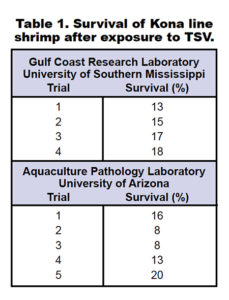
Breeding plan
Twenty maternal families of the Kona line are produced each year by artificial insemination using a rotational mating scheme designed to minimize negative inbreeding effects. Postlarvae produced at the Kona facility are distributed to members of the U.S. Marine Shrimp Farming Program four times per year for research purposes. If the requirements for research are fulfilled, surplus postlarvae are distributed to shrimp farms and educational institutions. About 5.5 million Kona postlarvae were distributed in the United States during 1999 to 2004.
Inbred reference line
The Kona line offers many benefits to researchers, but it is important to note that the shrimp are not homozygous, so they do not have identical pairs of genes for any given pair of hereditary characteristics. Currently, the Oceanic Institute is developing an inbred reference line by mating brothers and sisters over sequential generations. The new line is expected to be isogenic in the eighth to 10th generation.
The inbred reference line will be valuable in any area of shrimp research where confounding genetic effects may be important, such as nutritional studies or in assessing the efficacy of immunostimulants and vaccines.
(Editor’s Note: This article was originally published in the December 2004 print edition of the Global Aquaculture Advocate.)
Now that you've reached the end of the article ...
… please consider supporting GSA’s mission to advance responsible seafood practices through education, advocacy and third-party assurances. The Advocate aims to document the evolution of responsible seafood practices and share the expansive knowledge of our vast network of contributors.
By becoming a Global Seafood Alliance member, you’re ensuring that all of the pre-competitive work we do through member benefits, resources and events can continue. Individual membership costs just $50 a year.
Not a GSA member? Join us.
Authors
-
-
Karl Keller
The Oceanic Institute
P.O. Box 1423
Kailua-Kona, Hawaii 96745 USA -
Leitutolu Rasmussen
The Oceanic Institute
P.O. Box 1423
Kailua-Kona, Hawaii 96745 USA -
Steve M. Arce
University of Arizona
Tucson, Arizona, USA -
Shaun M. Moss, Ph.D.
University of Arizona
Tucson, Arizona, USA -

Donald V. Lightner, Ph.D.
University of Arizona
Tucson, Arizona, USA -
Verlee Breland
University of Southern Mississippi
Ocean Springs, Mississippi, USA -
Jeffrey Lotz, Ph.D.
University of Southern Mississippi
Ocean Springs, Mississippi, USA
Tagged With
Related Posts
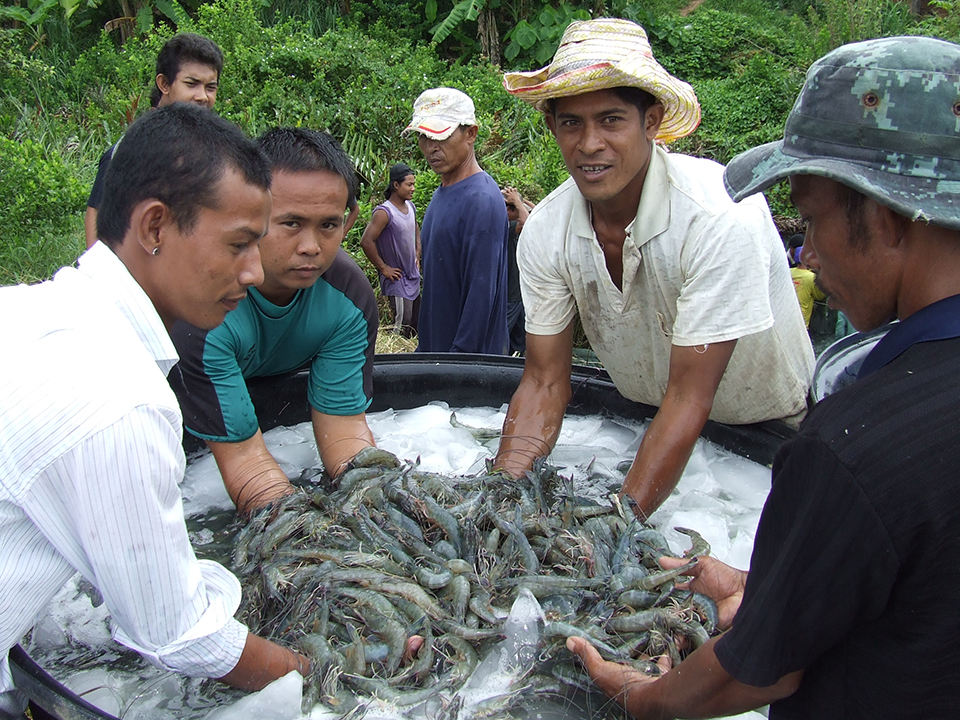
Health & Welfare
Blue alternative: High Health introduces SPF blue shrimp to Thailand
Blue shrimp are very similar to Pacific white shrimp, and can be raised under similar conditions. Blues grow faster and tolerate lower water temperatures.
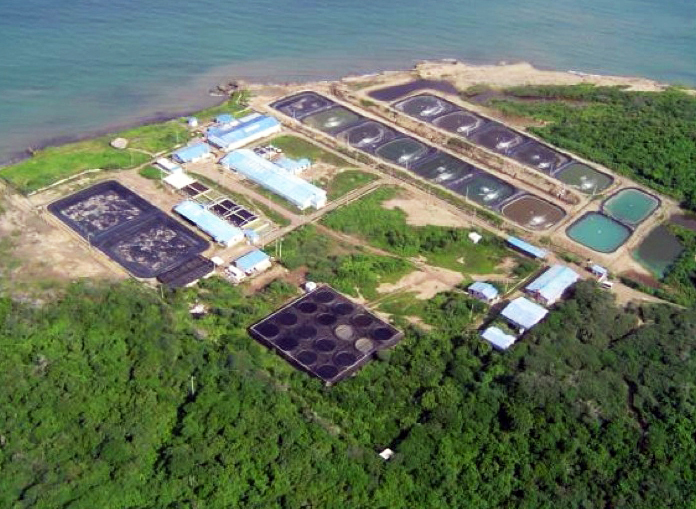
Health & Welfare
CENIACUA develops WSSV-resistant shrimp in Colombia
To combat white spot syndrome virus (WSSV) in white shrimp, Corporación Centro de Investigación de la Acuacultura de Colombia (CENIACUA) initiated a selective-breeding program to develop resistance in shrimp.
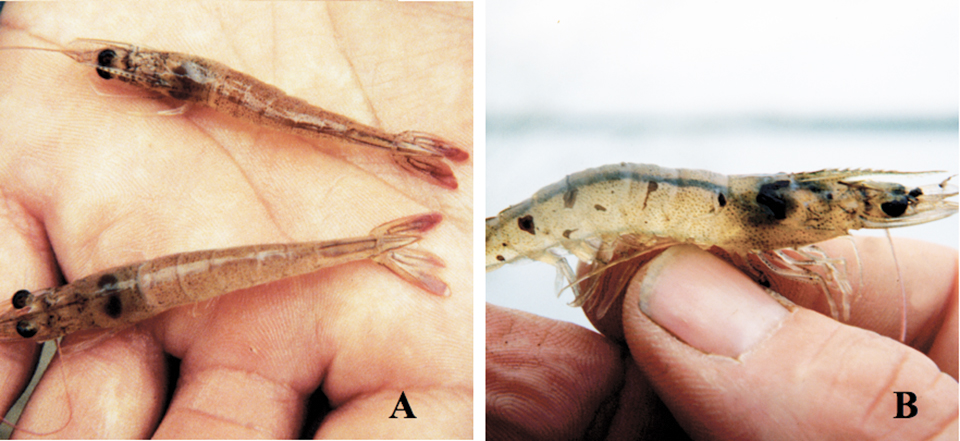
Health & Welfare
Evolutionary history of Taura Syndrome Virus
Based on a phylogenetic analysis with the BEAST program, the authors determined the evolutionary relationships among 83 Taura syndrome virus isolates.
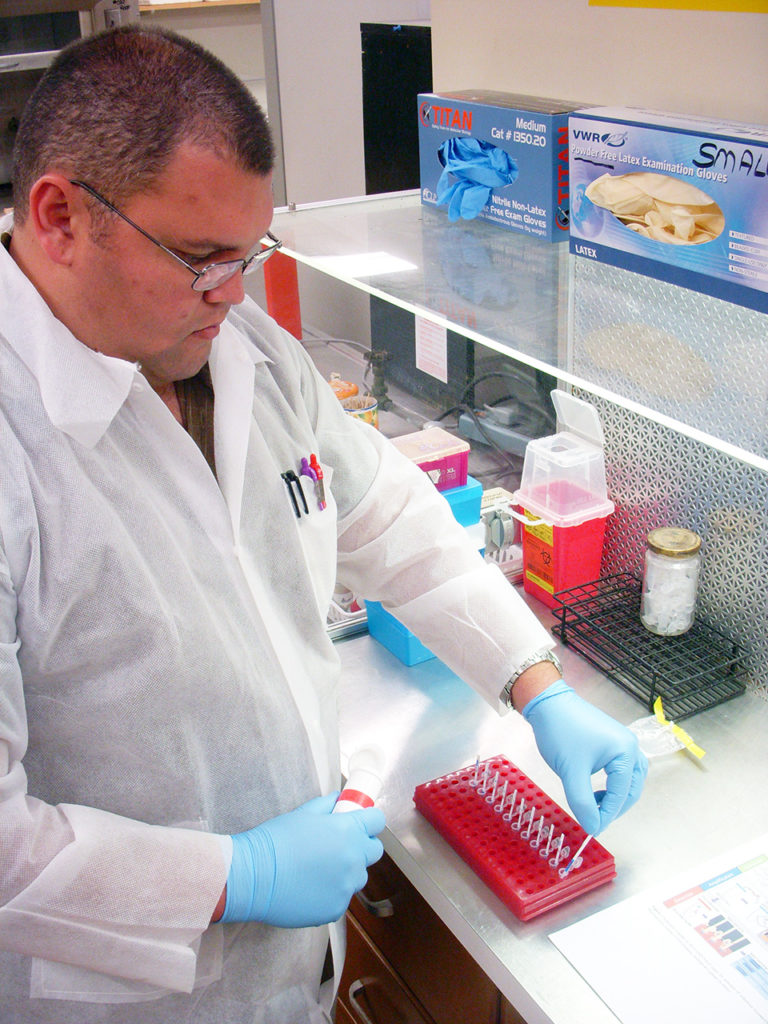
Health & Welfare
Hybrid assay can detect IMNV in resource-poor settings
The method can shorten analysis time and has applications for IMNV diagnosis in resource-poor settings because it does not require specialized equipment.


